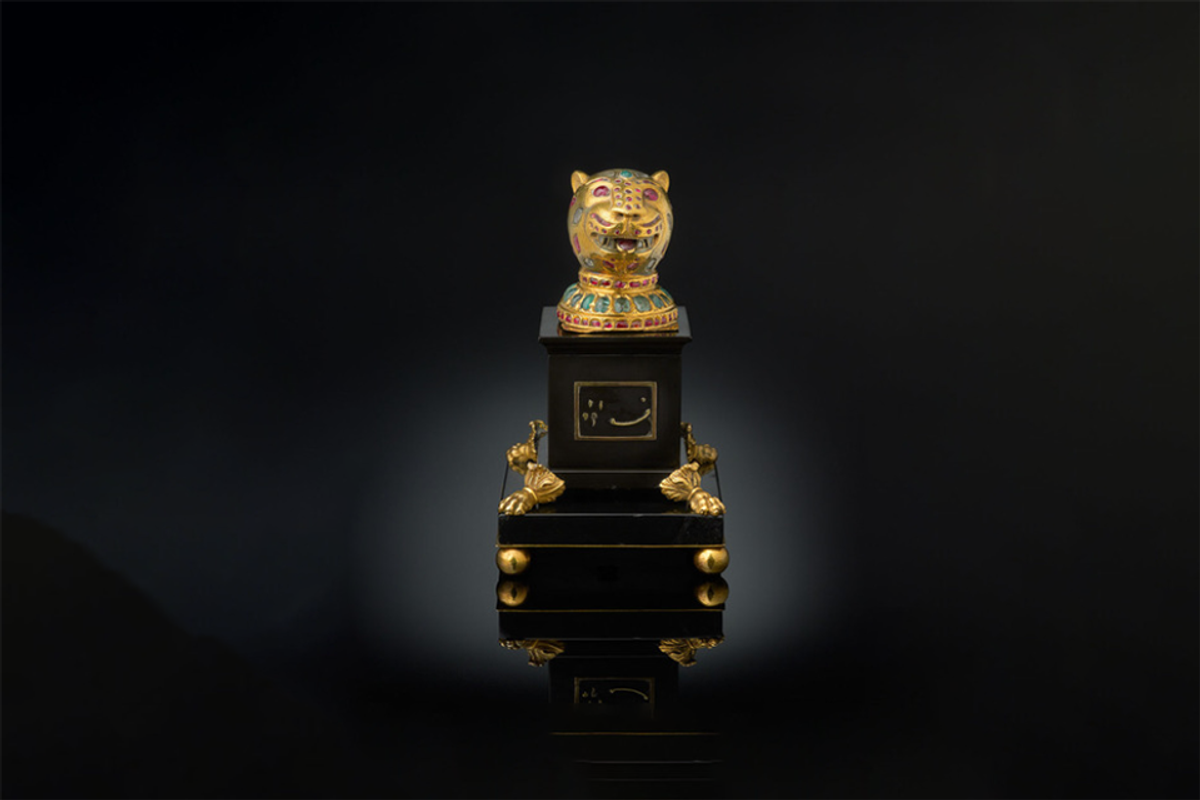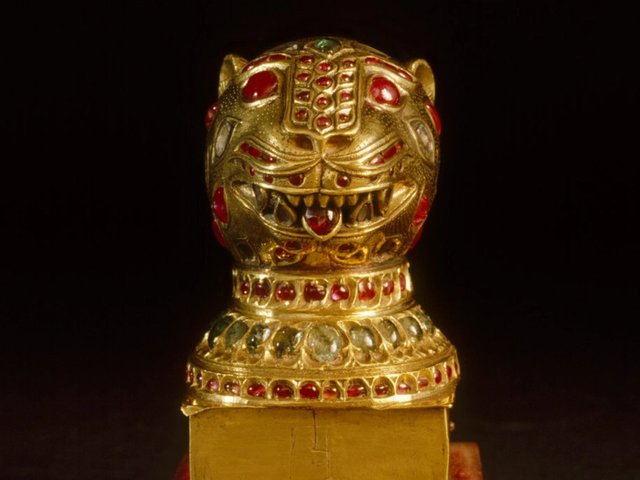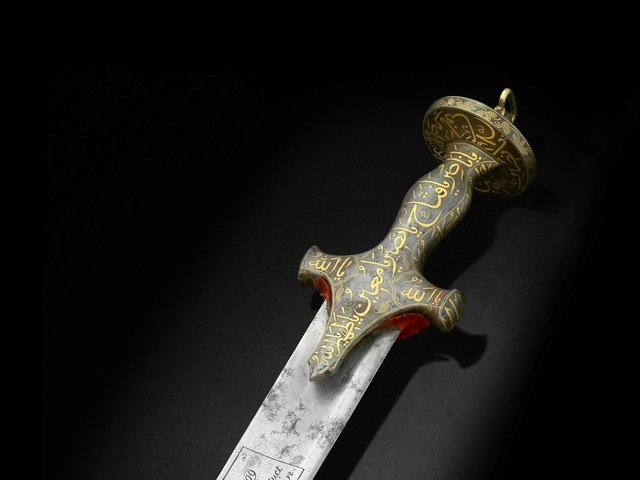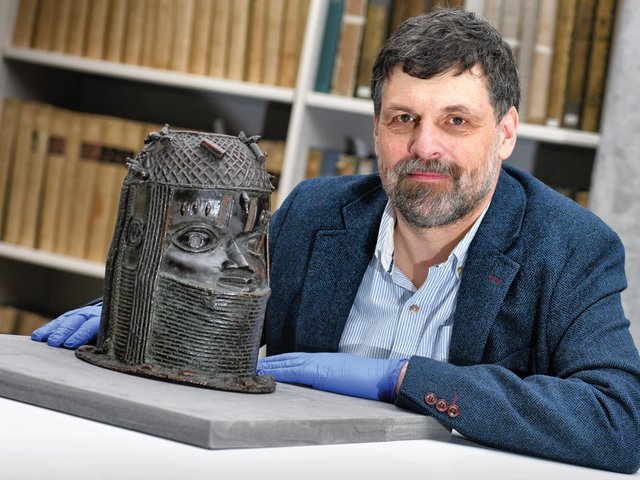The UK government’s decision to place a temporary export bar on a tiger’s head finial from the throne of Tipu Sultan has been criticised by some heritage commentators who claim the ornament was looted in the late 18th century.
The current owner of the tiger finial applied for an export licence earlier this year. The Department for Digital, Culture, Media and Sport (DCMS) hopes a UK-based organisation or individual will raise the £1.5m purchase price. The decision comes following advice from the Reviewing Committee on the export of works of art and objects of cultural interest.
The finial is one of eight golden heads that adorned the throne of Tipu Sultan. Christopher Rowell, a member of the reviewing committee, says in a statement: “Tipu Sultan’s golden and bejewelled throne (around 1787-93) was broken up by the British army’s Prize Agents after Tipu’s defeat and death in defence of his capital, Seringapatam, in 1799. This tiger’s head is one of the original eight which were placed on the balustrade of the octagonal throne.
But how did it arrive in the UK? In 1799, after defeating Tipu Sultan in south India, East India Company soldiers began to seize loot. Arthur Wellesley (later the Duke of Wellington) wrote: “scarcely a house in the town was left unplundered”. Another report speaks of “carnage” https://t.co/4fInbz2CH2
— Fatima Manji (@fatimamanji) November 15, 2021
Channel 4 correspondent Fatima Manji's tweet about the finial
Courtesy of Twitter
“[The head], one of four throne finials to survive, including a head in the Clive Museum at Powis Castle (National Trust), should remain in the country together with the other fragments of the throne, and I hope that every effort will be made to achieve this.”
But Channel 4 news correspondent Fatima Manji wrote on twitter: “But how did it [the finial] arrive in the UK? In 1799, after defeating Tipu Sultan in south India, East India Company soldiers began to seize loot. Arthur Wellesley (later the Duke of Wellington) wrote: ‘scarcely a house in the town was left unplundered’. Another report speaks of “carnage’.”
She adds: “The most senior Britons were alarmed at the wild behaviour of the troops. They decided to organise a process of handing out war booty, and as part of this Tipu Sultan’s octagonal throne was broken up and pieces handed out as prizes to soldiers. There were eight of these tigers.”
You do know how it got here in the first place though? https://t.co/ZEDswSiB8S
— Alice A. Procter (@aaprocter) November 15, 2021
Alice Proctor's tweet
Courtesy of Twitter
According to the Antiques Trade Gazette, the artefact was purchased at Bonhams for £389,600 in April 2009 and offered at auction again at Christie’s in New York in June 2019 in the Maharajas & Mughal Magnificence sale from the collection of Sheikh Hamad bin Abdullah Al Thani, estimated at £350,000-£500,000. However, the finial was withdrawn before the auction. According to Christie’s provenance details, the piece came from the historic collection of Baron Wallace of Knarsdale and was later consigned to the Bonhams sale. As part of the Al Thani collection, it has been exhibited at major museums around the world, including New York's Metropolitan Museum of Art in 2014, London's Victoria and Albert Museum in 2015 and the Palace Museum in Beijing in 2018.
The art historian Alice Procter tweeted: “You do know how it got here in the first place though?... Export bans are overwhelmingly nationalist and greedy, but to apply to an object that was taken forcibly through colonial violence because it’s importantly ‘our history’ is another level of cognitive dissonance.” She adds that the throne was destroyed by the British because it was considered more valuable in pieces. The DCMS declined to comment.





